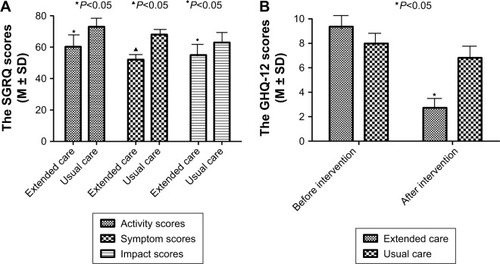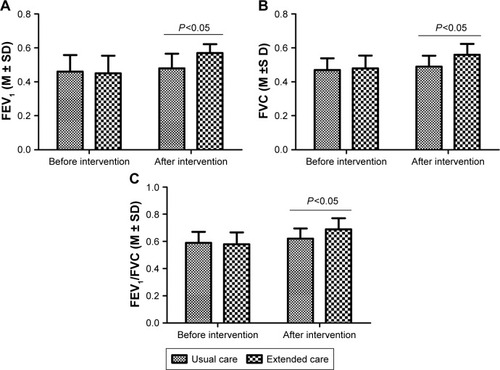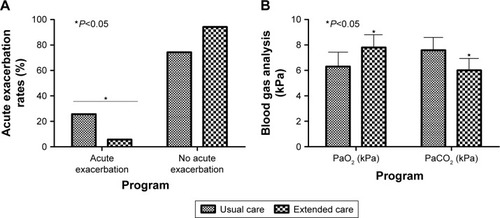Figures & data
Table 1 Clinical information and general data of the included patients (140 cases)
Table 2 Nursing measurement for usual care group vs extended care group (M ± SD) (140 cases)
Table 3 Comparison of SGRQ scale score between before intervention and after intervention for usual care group vs extended care group (M ± SD, points)
Figure 2 Evaluation of efficacy of extended care and usual care patients with COPD after discharge.
Abbreviations: GHQ-12, 12-item General Health Questionnaire; M, mean; SGRQ, St George’s Respiratory Questionnaire.

Table 4 Comparison of GHQ-12 score between before intervention and after intervention for usual care group vs extended care group (M ± SD)
Table 5 Comparison of pulmonary function between before intervention and after intervention for usual care group vs extended care group (M ± SD)
Figure 3 Effect of extended care and usual care on pulmonary function.
Abbreviation: M, mean.

Table 6 Comparison of acute exacerbation rates and blood gas after intervention for usual care group vs extended care group (M ± SD)
Figure 4 Effect of extended care and usual care on acute exacerbation rate and blood gas levels of COPD patients.
Abbreviations: PaCO2, carbon dioxide partial pressure; PaO2, oxygen partial pressure.


